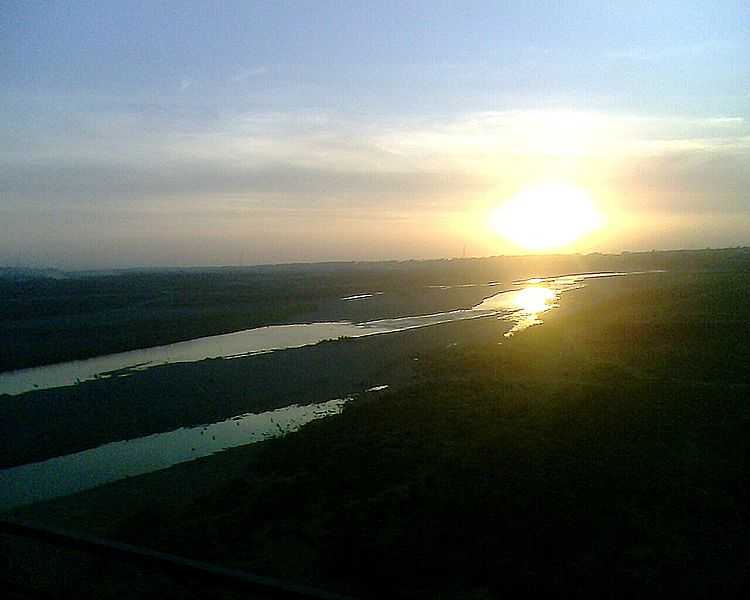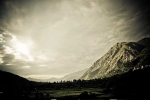"The Gateway to Himachal & Kashmir"
Pathankot Tourism
A gateway to Jammu & Kashmir and Himachal, Pathankot situated in the foothills ofKangrais best known for its serene green beauty and a rich historical past.
With the river Chakki passing by, Pathankot was the seat of the Loi and shawl weaving industry for many centuries. It also currently houses the base for the defence forces - Indian Army and the Indian Air Force. Pathankot also introduces you to some beautiful religious places like Mukteshwar Temple,Kathgarh temple,Nagni templeandShahpurkandi Fort. A place that embodies your chaos and leaves you with tranquillity. Pathankot has its own railway station which is connected with most of the major railway stations of India and that makes it a very important place to the surrounding areas of Dalhousie,Dharamsala, Kangra, Manali and parts of Jammu and Kashmir.
Download Pathankot PDF Guide >
What's Great?
Pathankot is a major stoppage before resuming the journey to Jammu & Kashmir and Himachal Pradesh. Historically sound and boasts of rich scenic beauty.
What's not so Great?
Slightly overcrowded in peak season. Limited flight connectivity from major cities.
For Whom
Ideal for couples/families/solo travellers seeking a short vacation. Pathankot is a multipurpose city; you can visit the city itself or various places around Pathankot.
The Gateway to Himachal and Kashmir
The Gateway to Himachal and Kashmir, Pathankot is both a destination as well as a stop-over site for tourists. The city boasts of a rich historical culture and flavour. With flowing Chakki and Ravi rivers, along with Shiwalik on the south and Himalayas in the North, Pathankot is a true beauty. One of the oldest sites of Punjab, Pathankot is richly blessed with forts, temples and lush green surroundings.
History of Pathankot
Pathankot, an ancient city with one of the oldest cited history in the state of Punjab antecede its past from the times of Mahabharata. Pathankot was known as 'Prathisthan' at that time and it is believed that it was a part of the kingdom 'Audumbra' In the 17th Century, Pathania clans of Rajput ruled the city from 'Nurpur' (at present, part of Himachal Pradesh). Nurpur which was named after Begum Nurjahan is also mentioned in the "Ain-i-Akbari" as the Pargana headquarter. During the time of Akbar, the name of the city was changed to 'Dhameri'. In 1781, Sayed Khan, a Paithan descendent from Nurpur kingdom took over Pathankot. However, in the other side of the story, a famous historian Cunnigham says that Pathankot gets its name from the 'Pathans' who settled there in medieval times. Pathankot was a home to coins of faraway history and the largest timber market of Asia at that time. Later on, after independence Pathankot became a residence for immigrants from Pakistan.
Itinerary
Day 1-Reach Pathankot in the morning. Freshen up and have breakfast. You can go for authentic Punjabi breakfast that will keep you filled the whole day. Post breakfast, head towards the Mukteshwar Temple. You can also visit the Shahpurkandi fort and the nearby caves. The fort gives an excellent view of the city. Head towards the Nurpur Fort and the nearby temples. In the evening, you can shop at the local bazaars, Pathankot is famous for its woollens and hosiery.Day-2You can visit the Keshopur Chhamb, a heaven for migratory birds and photographers. Alternatively, you can visit the Ranjit Sagar dam, post which you can delve into the tranquil atmosphere of Gurudwara Barath sahib. Evening strolls near temples and historical ruins are another past-time in Pathankot.
Oct-Apris the best time to visit Pathankot
October to April is the best time if you want to enjoy a trip to Pathankot itself. However, if you are planning to visit other places near Pathankot, you can come here anytime as the weather is never too hot in the summers as well.
Weather in Pathankot
Loading...
Pathankot in Summer (April - June)
Summers in Pathankot can experience the mercury rising up to 44-46 degree Celcius. If you are accustomed to a range of 34 degrees Celcius to 46 degrees Celcius, you can well plan your trip during these months.
Pathankot in Monsoon (July - September)
The monsoon winds from the south-west, south-east and at times from north-west or northeast. Pathankot can be visited in the monsoon if you wish to get soaked in the lush green beauty of the city.
Pathankot in Winter (October-March)
Winters are the best to visit Pathankot. The pink weather along with cool breeze and low temperatures altogether add up to a comfortable visit. Plan your trip around October-November or between February and March.
Monthly Weather in Pathankot
Month
Avg. Minimum (°C)
Avg. Maximum (°C)
January
7
17
February
9
23
March
12
27
April
18
35
May
22
38
June
23
38
July
25
34
August
24
33
September
23
34
October
17
32
November
11
26
December
7
22
Comments on Pathankot
Post Your Comment


 Nurpur Fort
Nurpur Fort Mukteshwar temple
Mukteshwar temple Shahpurkandi Fort
Shahpurkandi Fort Nagni temple
Nagni temple Mcleodganj
Mcleodganj Dalhousie
Dalhousie Khajjiar
Khajjiar Manali
Manali Dharamshala
Dharamshala Amritsar
Amritsar